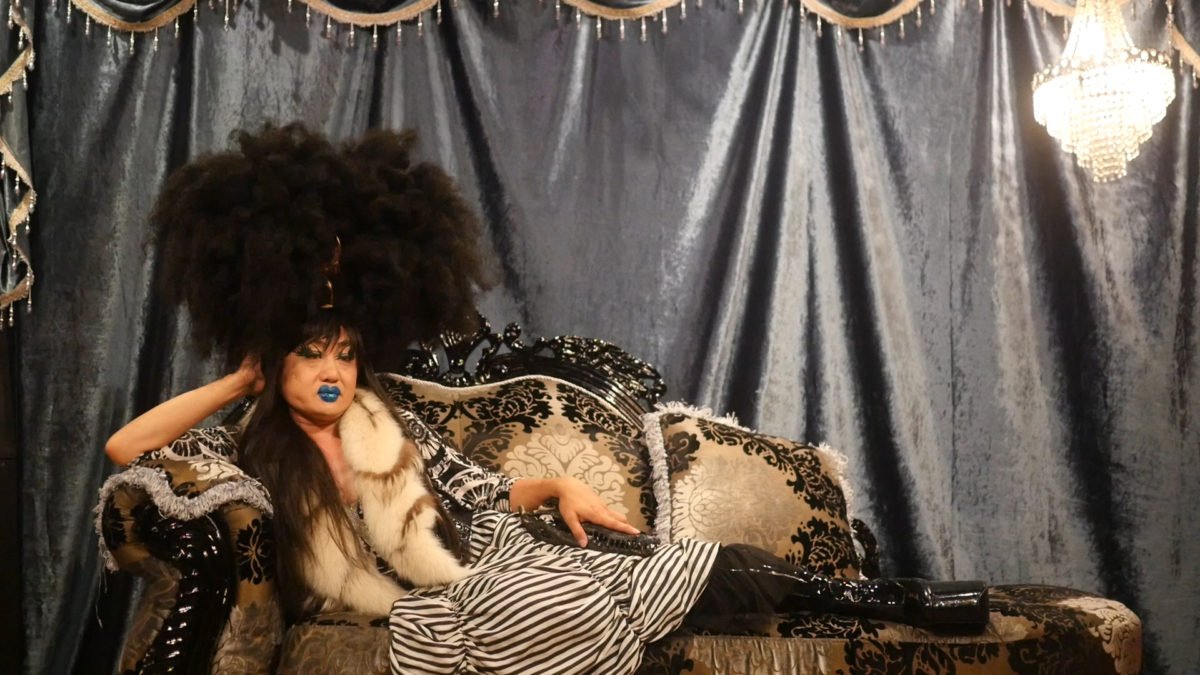
The LA based Canadian filmmaker Graham Kolbeins set himself an impossible task with his new documentary Queer Japan. Although it is both intriguing and thoroughly entertaining it is also very obvious that 90 minutes is certainly not long enough to comprehensively cover the whole spectrum of LGBTQ culture in Japan.
Although somewhat uneven in parts, Kolbein’s glimpse at how traditional Japanese society is slowly embracing the queer community does have some fascinating glimpses into the lives of a few of the more outrageous and larger than life characters in the community.
Kolbein starts his investigation in Tokyo which now boasts an LGBTQ district with more bars/clubs/stores than any other major city. It is also more diverse than most too with not just an impressive number of lesbian bars, which are closing everywhere else around the globe. but also some specialised venues that cater for people on the extreme ends of the queer spectrum.
Favorite scene was the self-identifying female performance artist with a major rubber fetish who constructed a giant rubber pig from which rubber clad piglets came out and sucked on her breasts in the most surreal manner. Wonderfully bizarre.
Gengoroh Tagame the famous manga artist made for a fascinating interviewee as he explained how he explored his own love of sado-masochism by starting G Men one of the first ‘hentai’ anime and manga pornographic explicit gay magazines in Japan. He combines that with an all-ages manga series My Brother’s Husband that teaches young kids about being gay.
Interesting enough Tagame had co-founded G men with the publisher of Badi a more generic gay magazine that had started in 1994 but has ceased being published this year, whilst GMen goes from strength to strength.
 The highlight of Kolbeins’ look at the queer scene in Kyoto with an interview with Simone Fukayuki a very famous drag queen who totally ignored the four muscle near naked men behind her who were touching each other up. Her legendary party Diamonds Are Forever that has been growing strong since the 1990”s has the most diverse crowd ever proving that whatever part of the spectrum you sit on, there is a ‘home’ for you.
The highlight of Kolbeins’ look at the queer scene in Kyoto with an interview with Simone Fukayuki a very famous drag queen who totally ignored the four muscle near naked men behind her who were touching each other up. Her legendary party Diamonds Are Forever that has been growing strong since the 1990”s has the most diverse crowd ever proving that whatever part of the spectrum you sit on, there is a ‘home’ for you.
Kolbein seemed to be implying that the queer scene in Japan was wonderfully healthy, but then half way through his film (which incidentally stuck to major urban areas) he started to point out some of the negative aspects.
Whilst the transgender community may have their own bars and safe places now, the fight to be able to legally change their gender officially ended up with an impossible compromise. Aya Kamikawa the one elected transgender politician who had sponsored the law which was amended to insist that any person who wish to officially register another gender must have their reproductive organs removed first.
Also like the West, Japan has also seen the resurgence of a racist Far Right movement that has the LGBTQ community in its sights too.
Credit to Ko;bein for keeping your attention to the end credits even though this would all been better served in more depth like a series . This is a intriguing look at the queer community that we now would like to no more about .

